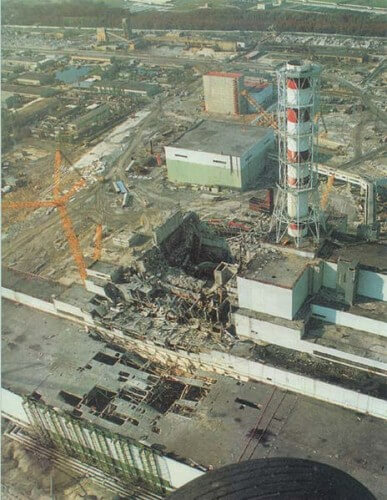The Scientific American team lists ten projects that stretch the boundaries of the engineering world

New safe confinement
The world's largest coffin since the Great Pyramid of Giza built in 2560 BC will soon contain the remains of the Chernobyl nuclear power plant. To minimize the workers' exposure to radiation, the structure of the steel arches, which is about 120 meters high and weighs about 32,000 tons, will be assembled 300 meters away from the destroyed reactor, and will be transported to its place on Teflon rails. When the structure is completed, in 2015, it will be the largest mobile structure in the world.
Delta fortifications (Delta Works)
The world's largest water containment structure is not a single dam but a network of structures. More than 16,000 kilometers of dikes, dams and walls work in combination to protect the Netherlands from the North Sea. It took around 50 years to build this project, but rising sea levels as a result of climate change means that Dutch engineers will continue to constantly upgrade the delta's fortifications to keep their country dry.
Neural processing cores
Today's computer chips struggle to perform pattern-matching tasks, such as face recognition. IBM is developing "neural core" processors that will mimic the flexible organization of nerve cells in a living brain. Instead of separate units for processing and memory, these chips will combine the two tasks so that they can learn from new data coming into them. The first chip of this type learned to play "pong".
The submarine Triton 36000/3
When director James Cameron arrived at the Mariana Trench in 2012, he only had a small porthole to peer into the depths of the ocean. But the private submarine company "Triton" is working on building a submarine with similar diving capabilities that will offer a 360-degree field of view. A spherical shell that will open like an oyster, made entirely of high-pressure resistant glass, will allow teams of up to three researchers to maneuver in the depths using a control system of optical fibers that will pass through the glass shell.
Micro-robotic spies
It took the United States Department of Defense five years to build a hummingbird-like robot that flaps its wings to fly. This flying robot, unveiled in 2011, is able to take videos and transmit them via satellite to its operators on another continent. Other researchers have created coin-sized wireless robots that mimic a swarm of bees.
Oliver Munday
The International Space Station
Critics argue that this heavenly laboratory, which cost 100 billion dollars, did not produce scientific results worth even close to that amount. However, as an engineering marvel it has no rivals. Astronauts who went on "space walks" assembled 40 main structural components and, like in a giant Lego game, created a space palace with 15 rooms. The structure crosses the sky at a speed of 27,000 kilometers per hour.
Stem cells are programmable
At first, the human race made tools out of stone, and then out of metal and cast iron. The next step is cells: thousands of studies have tested the potential of engineered stem cells: human cells programmed to perform certain actions of our choosing. Here's one example from 2012: Bioengineers programmed blood cells to become immune cells that go after HIV-infected cells and destroy them.
The gold mine is spectacular
The gold rush is over and done with, but there is still plenty of gold left deep underground. To reach it, the South African mining company Anglo-Gold Ashanti drilled to a depth of more than three kilometers, making Maponang the deepest mine in the world. At such depths, temperatures can reach 60 degrees Celsius. The company maintains a temperature of less than 30 degrees, and the miners fully conscious, through the flow of a solution containing tiny ice crystals (slurry ice) through metal pipes.
the Internet
The World Wide Web, invisible and as vital as breathing air, is the most important engineering achievement in modern history.
The Endurance robot
NASA helped design this autonomous swimming robot, with the goal of exploring vast lakes buried under the Antarctic ice sheet. This is the initial version of the robots that will one day explore the distant and dangerous oceans located (so it is assumed) under the ice cover of the moon Europa, one of the moons of the planet Jupiter.



